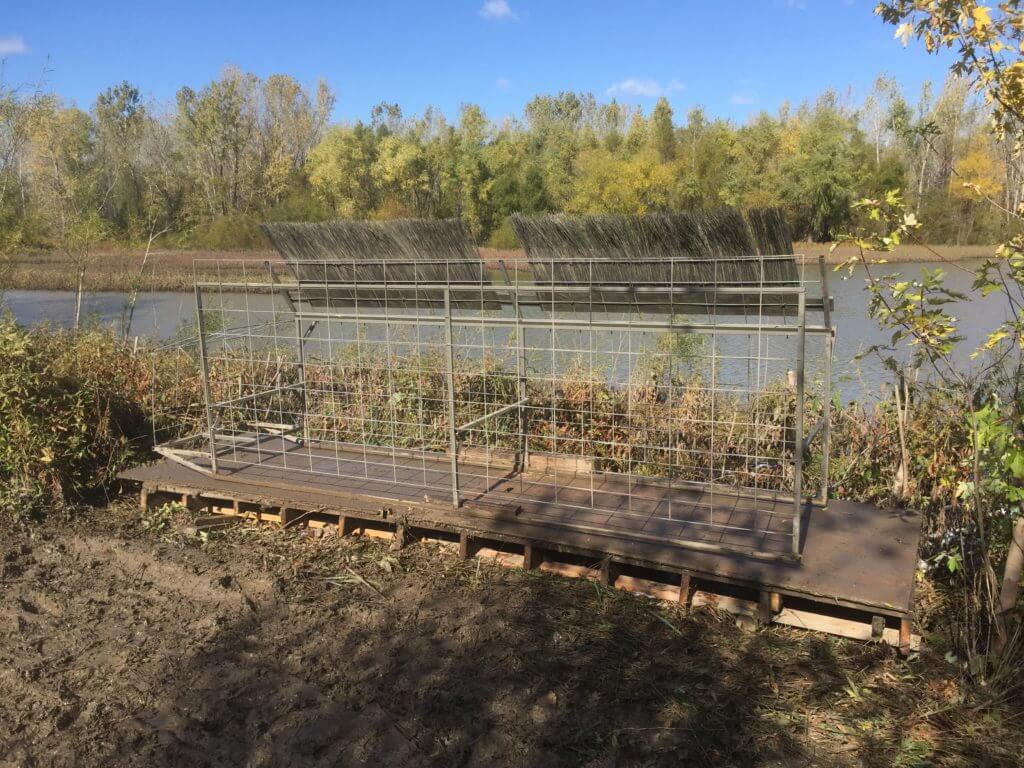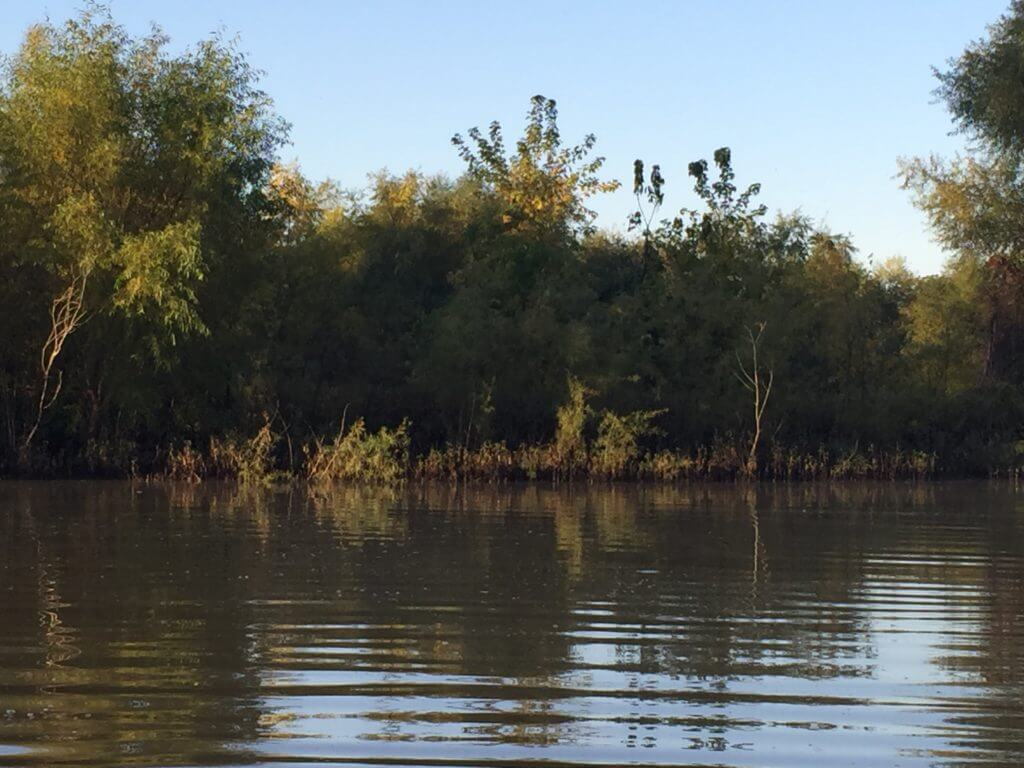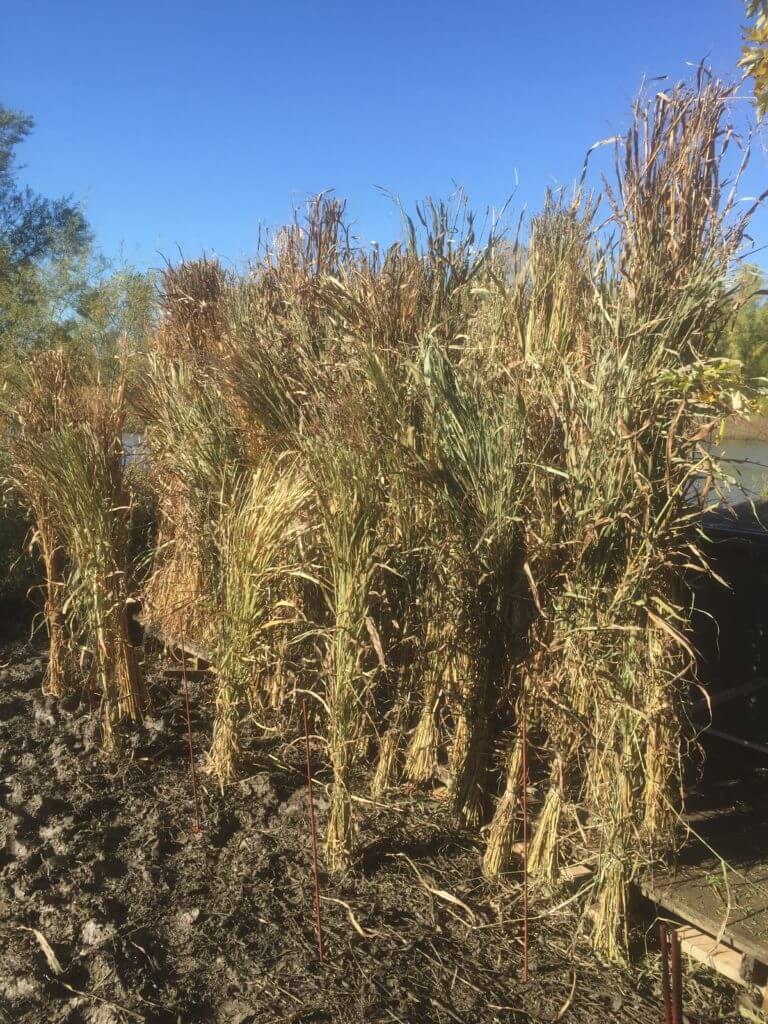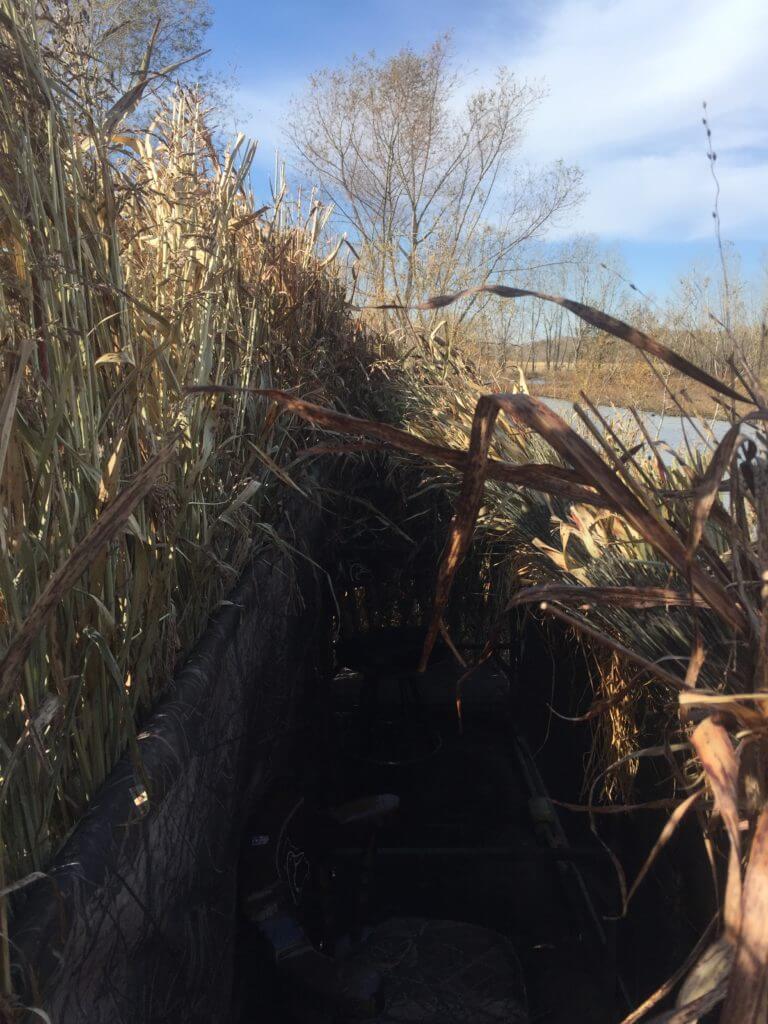I would guess I have hunted in most types of water and land-based blinds. Some have all the creature comforts of home and others are only for the strongest of waterfowl hunters. In my 50 plus years of duck hunting, I have learned one simple rule about blinds and that is: You will never get it in the right place the first time.
One of the marshes I hunt now has had the blind moved at least five times in the last five years. Now I have to admit Mother Nature took care of moving the two remaining blinds this past summer, but in hindsight, it was perhaps the best thing that ever happened. With high water and current laden floodwaters, two blinds just floated off. Hard to imagine what it must have looked like, but a nearly 20-foot six-person blind caught the current and for now is not usable.

There are all kinds of permanent blinds out there but most miss the point of how one knows exactly where to put a permanent blind. Friends have them, and talk often about being miss-aligned or in the wrong location with regard to the sun and worse, just do not blend in well. On the other hand, the newest in portable blinds are worth considering.
At one end of the spectrum, several companies have blinds that can be packed up and carried in like Lucky Duck. They make a lightweight two or convertible to a four-man blind. The blind can be easily carried anywhere and brushed. Perfect for those tough hides.
The type I want to show it is more rigid but still lightweight. You can weld one up, or purchase these for a few hundred dollars and once set in place give you a ton of options like:
- Built on skids so you can drag them in
- Light enough two people can pick them up
- Seating is adaptable
- Woven wire panels brush up easily
- Flip front doors
- Great visibility
- Can be blended into any environment
You might call these a hybrid between the steel or concrete pit blinds and the fully packable blinds. ARduckblinds in England, Arkansas makes a wide variety worth checking out with pricing dependent on the style you choose.



Sighting a blind is difficult unless you have years of experience in that marsh. The first blind we had was in the middle of the marsh on a bump, and then we removed it and moved it to the levee. Next, we moved north, then after the flood, we moved even further north more or less ending up in a small part of the marsh. We had noticed over the years birds wanted in this area and by moving further north, we put the sun on our right shoulders early and behind us the rest of the day. In the photo taken at 8:20 AM, you see the blind position in the darkness and shade provided by vegetation east of the blind.
Duck hunters know the best location is with the sun at your back and the wind at your back. This is a tough combination as the sun continues to set further in the southern sky while the winter winds are predominantly out of the north and northwest. Best you can do is find a happy medium to get the ducks landing into the wind in a way you can see them. Of course, they have a mind of their own.


While these blinds are easily pulled around either by hand or with a four-wheeler, having something in the way of a floor really keeps the whole thing from turning into a muddy mess. The platform did not take much to build and stabilize the interior. Hard to keep the wind out on these types of blinds, but some fabric can be placed on the windward side.

The wire around the frame are pieces of cattle panels that are stiff and easy to zip-tie all types of vegetative material. You can stuff, tie, cover and camouflage in just about any manner. Notice here, the high backside that allows those in the blind to be backgrounded rather than silhouetted when the sun is at your back. A flip forward single door gives you all kinds of room to shoot and in the early morning hours really does not need to be closed. Those high-speed teal passes are much easier to shoot if you are standing and ready.


Another feature of blinds that is well worth the effort is to place more brush in front of the blind and in back a few feet out. This creates a sense of depth and breaks up the geometry of the blind. Use small stakes to attach bundles of brush in several locations.






So far, we have had great success in this new portable configuration. Still, discussion abounds concerning another move. Time will tell, but if that happens, it will not take any time to move. Also, at the end of the season, this blind can be stored as-is and no more worries about flooding.


This is very Helpful , I have been a Duck since 1958, he knows Ducks!